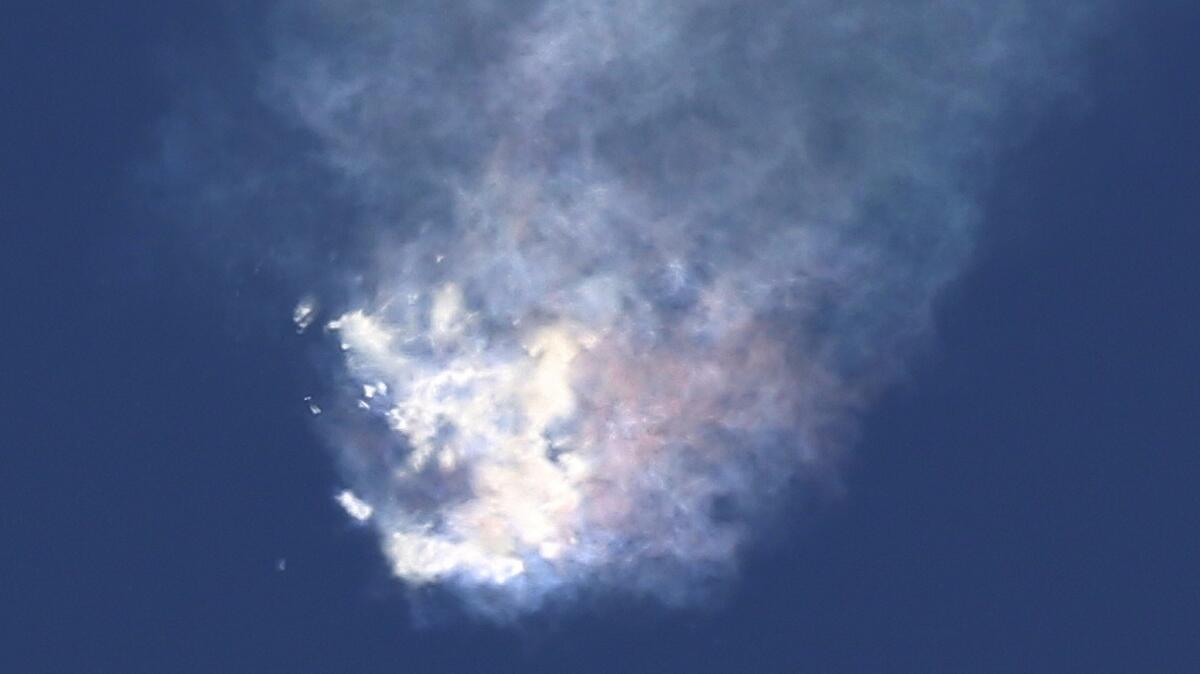NASA negotiates cheaper mission prices after last year’s SpaceX failure

Shortly after launch, a SpaceX Falcon9 rocket broke apart June 28, 2015 after launching from Cape Canaveral Air Force Station in Florida.
NASA negotiated discounted mission prices with SpaceX after one of the Hawthorne company’s rockets broke apart last June while laden with supplies for the International Space Station, according to a report by the space agency’s office of inspector general.
The report, which was released this week, also said the most important item among the rocket’s $118 million worth of cargo was the first of two docking adapters, which will enable crew vehicles under development by Boeing and SpaceX to dock at the International Space Station.
That adapter cost $32.4 million to develop and losing it means that there is no backup in case the remaining one fails.
The second docking adapter is set to be delivered by SpaceX in July.
The report said that allowing SpaceX to lead and run an investigation of the accident raised questions about “inherent conflicts of interest,” though it stated that the investigation was “transparent” and outside parties from the Federal Aviation Administration, the National Transportation Safety Board and others had access to the data and analysis.
NASA also created its own board to verify and review the SpaceX investigation.
In response, the company said: “SpaceX is pleased with the OIG’s conclusions that NASA effectively managed its contract with SpaceX to reduce cost and financial risk, and that SpaceX provided ‘significant enhancements to the agency’s science and operational capabilities.’
“We’ve now launched seven times successfully since the mishap and continue to work with NASA to improve the commercial cargo and crew programs.”
In a report released last year, SpaceX determined that the cause of the launch failure was a failed strut assembly in the rocket’s second stage that was holding down a helium tank.
For more business news, follow me @smasunaga







